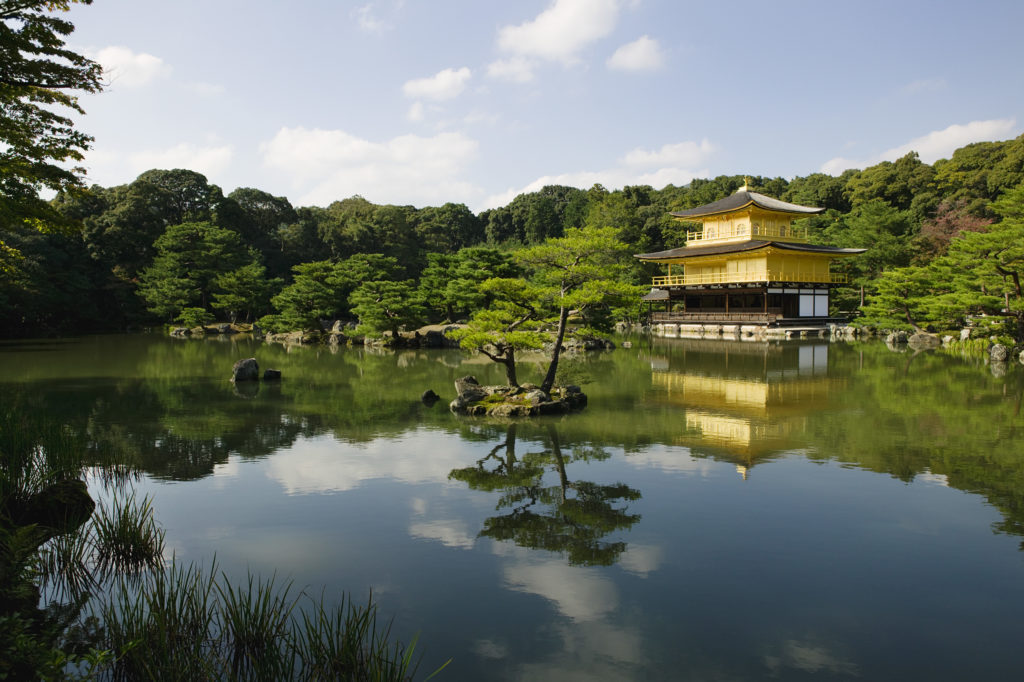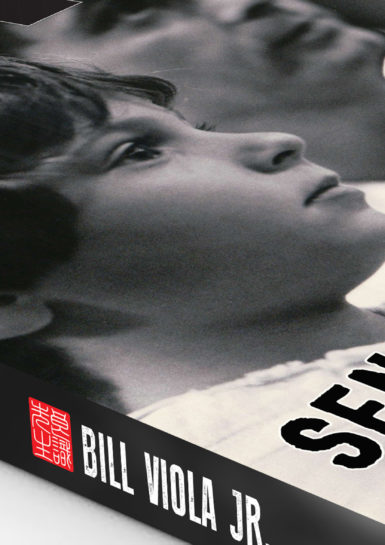01 Jul
2018Mokuso in your daily life

Mokuso 黙想
To Focus and Clear One’s Mind
Sensei Says, “Take time to reflect.” As a CommonSensei, I teach much more than punches and kicks in my books and courses. I am a “Martial Wayist” (aka budoka) at ❤️ heart. am a believer of practicing the martial way 🥋. The real battles in life are “Mental.”
Mokuso is the Japanese term for meditation and I have adopted this practice to help clear our minds before you take action on a task. Mokuso is practiced to help relieve stress, sharpen our minds, and channel energy.
Mokuso 黙想 is an opportunity to eliminate all the stress weighing you down and enter a state of peace. This does not have any religious significance at our dojo, it is purely an exercise for controlling our emotions and concentration.
黙 (mo/dama) Silent
想 (so) Thoughts
While in your “silent thoughts” you should practice correct breathing. This will help relive tension (stress). It should be from your 腹 “hara” aka belly (not your stomach but more of a metaphysical area). Why? Your center is where your energy is stored. If you observe a new born, or even animals you will notice the abdominal breathing. As adults, we tend to breath more from our chest.
Your tanden 丹田 (field) is a few inches below your navel (deep within the hara). Samurai believed that this is where your spirit lived. It is essentially the body’s center of gravity. The tanden acts as a reservoir of vital energy 気 (Ki Energy) and through correct breathing you can charge these batteries so to speak.
FYI: We typically perform Mokuso in 正座 “Seiza” which literally means proper/correct sitting in Japanese. (Kneeling on the floor and folding legs under the thighs and 尻 “shiri” (your butt ) The tops of the feet are flat and big toes cross. 🙇♂️
- 丹 (tan) medicine (medical substance)
- 田 (den) field
Physiologically the diaphragm controls the breathing. So one should Inhale through the nose (slowly from deep within the center) and slowly exhale through your mouth.
This training also prepares you the concept of mushin 無心 (no mind).
- 無 (mu) not or without
- 心 (shin) heart-mind
Mushin is having a mind “not” fixed or occupied by thought or emotion…thus the mind is open to everything.In this state you can be to everything. Mushin is free from anger, fear, or ego during combat. In terms of Kumite, I like empathize this mindset as “no fear.” You feel no pain, you are unstoppable.
I believe you can exhibit Mushin in all areas of life in the GOAL PAGODA: Kihon (fundamentals) Kata (routines) and Kumite (Action).

“Empty your mind, be formless shapeless — like water. If you put water into a cup, it becomes the cup. You put water into a bottle and it become the bottle. You put it in a teapot, it becomes the teapot. Now, water can flow or it can crash. Be water, my friend.” -Bruce Lee

Common Sensei





Pingback : The Magic of Matcha - Common Sensei
Pingback : Shin 心 - Common Sensei
Pingback : Black Belt in Life the ultimate instruction manual
anm"ala dig till binance
Can you be more specific about the content of your article? After reading it, I still have some doubts. Hope you can help me. https://accounts.binance.com/sv/register?ref=FIHEGIZ8
Pag-sign Up
Can you be more specific about the content of your article? After reading it, I still have some doubts. Hope you can help me. https://www.binance.com/ph/register?ref=P9L9FQKY
20bet
Your article gave me a lot of inspiration, I hope you can explain your point of view in more detail, because I have some doubts, thank you.
20bet
Your article gave me a lot of inspiration, I hope you can explain your point of view in more detail, because I have some doubts, thank you.
20bet
Your article gave me a lot of inspiration, I hope you can explain your point of view in more detail, because I have some doubts, thank you.
nimabi
Thank you very much for sharing, I learned a lot from your article. Very cool. Thanks. nimabi
Binance Referral Code
Thank you for your sharing. I am worried that I lack creative ideas. It is your article that makes me full of hope. Thank you. But, I have a question, can you help me? https://accounts.binance.com/ph/register-person?ref=GJY4VW8W
fuck
daxktilogibigibi.nbh6f6jubnSD
Inscreva-se na binance
Can you be more specific about the content of your article? After reading it, I still have some doubts. Hope you can help me. https://accounts.binance.com/pt-BR/register-person?ref=V2H9AFPY
Iscriviti per ottenere 100 USDT
Your point of view caught my eye and was very interesting. Thanks. I have a question for you. https://accounts.binance.com/it/register-person?ref=T7KCZASX
rivery
xyandanxvurulmus.hSPtVH9z2G7P
paperwork
xbunedirloooo.nCJRspKNKQ4p
genlock
genlock xyandanxvurulmus.VohPKJWyRENG
eversible
eversible xyandanxvurulmus.JcL46ActhZcm
Fvvmsf
allergy medication better than allegra generic allergy pills allergy medication primary name
Binance注册
Your article helped me a lot, is there any more related content? Thanks! https://www.binance.info/zh-CN/join?ref=T7KCZASX
Abcbyz
deltasone 5mg ca purchase prednisone
b^onus de indicac~ao binance
Can you be more specific about the content of your article? After reading it, I still have some doubts. Hope you can help me. https://www.binance.com/pt-PT/join?ref=V2H9AFPY
Rqefcp
can antidepressants cause heartburn buy cipro
Ksvdsz
acne pills prescribed by dermatologist order prednisone 20mg online cheap expensive acne medication
Bioheal CBD Gummies Review
Attractive section of content I just stumbled upon your blog and in accession capital to assert that I get actually enjoyed account your blog posts Anyway I will be subscribing to your augment and even I achievement you access consistently fast
Nssfqw
which anti anxiety drugs increase heartburn epivir medication
techtricks24h
Wow superb blog layout How long have you been blogging for you make blogging look easy The overall look of your site is magnificent as well as the content
Xfszny
buy isotretinoin accutane where to buy isotretinoin 40mg usa
pornhub bahis siteleri
BİZİ SİK BİZ BUNU HAK EDİYORUZ vurgunyedim.bGHGAtYLdSQx
Sxryfa
buy strongest sleeping pills phenergan order online
Lnuwju
amoxil sale buy amoxil 1000mg generic amoxil tablet
bahis siteleri incest category
food porn yaralandinmieycan.mciuxT4RKlmC
Wjljvk
order azithromycin generic buy azithromycin 500mg online cheap zithromax over the counter
Liwawl
neurontin 100mg cheap buy neurontin pills
bahis siteleri porn
amciik siteleri citixx.vCBHh8M5Or09
bahis siteleri child porn
sexax hyuqgzhqt.mcwh6wweftUf
escort siteleri
childrens sex ewrjghsdfaa.v0Hh6f243odI
porn
sexx wrtgdfgdfgdqq.7VhXRqHA6AmV
am siteleri
am siteleri wrtgdfgdfgdqq.VCb2zUSIfVo3
Uunppe
azithromycin canada azithromycin 250mg drug buy azithromycin 250mg without prescription
Azzjnf
buy lasix pill diuretic buy lasix 40mg sale
How to Index Backlinks
how to index backlink ? watch this
Fkqdxb
order generic prednisolone order omnacortil 10mg cheap prednisolone
Nyywfi
order prednisone generic order prednisone pills
Tktucv
buy amoxicillin 500mg pill brand amoxicillin order amoxicillin 250mg without prescription
Iqmjsi
purchase monodox without prescription order monodox sale
Kaymbf
albuterol for sale online order albuterol inhalator sale buy generic albuterol over the counter
Rybmbr
buy amoxiclav pills clavulanate generic
sikis izle
Porno keyfini Evooli ile daha iyi çıkartıp hazzı doruklarda yaşamaya hazırsan, hadi durma HD Porno Filmlerini ücretsiz izle.
Sboiey
synthroid order online buy synthroid tablets buy synthroid 75mcg
Ugidbz
buy vardenafil generic purchase levitra pill
sohbet.net porn
sohbet net porn comics, 4k porn sohbet.net, chat porn sites sohbet, indian porn sohbet odalari, girls do porn http://www.sohbet.net
Qtrnec
clomiphene 50mg usa generic clomiphene buy clomiphene
Yzrczr
rybelsus ca semaglutide sale rybelsus 14mg generic
Hijtek
deltasone without prescription purchase deltasone online cheap prednisone 5mg without prescription
Yglyjs
buy semaglutide online cheap rybelsus 14mg without prescription buy rybelsus for sale
Tài khon binance
Can you be more specific about the content of your article? After reading it, I still have some doubts. Hope you can help me. https://www.binance.info/vi/join?ref=W0BCQMF1
Qvidsu
absorica online isotretinoin 20mg drug accutane 10mg usa
seksi siteler
escort hepxhupx.odQAfy6ZK92Q
fuck
food porn juljulfbi.gmryzzTULGk3
Yhuuet
ventolin inhalator cheap order albuterol 4mg ventolin 2mg usa
Hdqiru
amoxil 1000mg for sale order amoxicillin for sale buy amoxil paypal
am siteleri
sexx bjluajszz.g31eoeCkndJq
porn siteleri
BİZİ SİK BİZ BUNU HAK EDİYORUZ bxjluajsxzz.0l5PUnBBGk4a
sexx
BİZİ SİK BİZ BUNU HAK EDİYORUZ 0qbxjluaxcxjsxzz.Xz0vW5plqIOj
Vuhopi
buy augmentin 375mg sale where can i buy clavulanate augmentin 625mg price
Yqzylq
buy azithromycin without a prescription zithromax 500mg for sale order zithromax 250mg online
Tucfuz
synthroid 150mcg tablet synthroid online buy buy synthroid 100mcg pill
Qyhekl
prednisolone online order omnacortil 20mg pills purchase prednisolone without prescription
Vkhitr
clomiphene canada order clomid 50mg purchase serophene sale
Qdhwsj
buy neurontin 600mg without prescription neurontin canada order neurontin 800mg pill
Najlepszy kod polecajacy Binance
Thank you for your sharing. I am worried that I lack creative ideas. It is your article that makes me full of hope. Thank you. But, I have a question, can you help me? https://www.binance.com/pl/join?ref=FIHEGIZ8
Azbsyh
viagra 25mg for sale viagra 50mg pills for men viagra generic
Qpxvhi
buy furosemide sale diuretic brand furosemide 40mg lasix 40mg ca
binance referral bonus
Thank you for your sharing. I am worried that I lack creative ideas. It is your article that makes me full of hope. Thank you. But, I have a question, can you help me? https://www.binance.info/en/join?ref=RQUR4BEO
Oehvab
buy rybelsus rybelsus 14 mg pill semaglutide 14 mg tablet
Conycr
purchase vibra-tabs generic buy acticlate online order generic doxycycline
binance推薦獎金
I don’t think the title of your article matches the content lol. Just kidding, mainly because I had some doubts after reading the article. https://www.binance.info/zh-TC/join?ref=P9L9FQKY
Pizgre
buy levitra 20mg for sale levitra 10mg cheap buy vardenafil 10mg without prescription
Clrkwz
real money spins online us blackjack online spins real money online
Avlisx
plaquenil buy online buy cheap generic hydroxychloroquine plaquenil 200mg for sale
Qyvbrq
lyrica 75mg cheap buy cheap lyrica pregabalin 150mg cost
Ljrovt
cialis online order tadalafil 5mg generic buy tadalafil tablets
Weobij
order triamcinolone online order aristocort 4mg sale aristocort 4mg canada
rybelsus canada pharmacy
rybelsus xr
Ieoyhh
desloratadine 5mg without prescription desloratadine 5mg usa order desloratadine 5mg generic
Awccpy
order cenforce cenforce 100mg us order cenforce pill
binance
Your point of view caught my eye and was very interesting. Thanks. I have a question for you. https://accounts.binance.com/ka-GE/register-person?ref=FIHEGIZ8
porno
Online bahis dünyası sürekli olarak gelişmekte ve bahis severler için yeni fırsatlar sunmaktadır.
Wsuwpl
buy chloroquine without a prescription buy aralen 250mg online cheap where to buy chloroquine without a prescription
Srfobb
order claritin generic claritin drug claritin online buy
childrens sex
anal siteleri pokkerx.TXJBfydKNub4
bahis siteleri porn sex incest
anal sikis siteleri footballxx.6jSnIqPN9254
bahis siteleri sikis
seks siteleri mobileidn.x6IxH7G4tAQD
porn siteleri
porno siteleri bingoxx.YZLBJdk2vL1b
bahis siteleri sikis
BİZİ SİK BİZ BUNU HAK EDİYORUZ 250tldenemebonusuxx.SeGd38iZfEJj
food porn
eskort siteleri eyeconartxx.ykaFRTRoN1Ez
binance Anmeldung
Your point of view caught my eye and was very interesting. Thanks. I have a question for you. https://www.binance.com/de-CH/register?ref=S5H7X3LP
Registro
I don’t think the title of your article matches the content lol. Just kidding, mainly because I had some doubts after reading the article. https://www.binance.info/pt-PT/join?ref=PORL8W0Z
Ibwkle
xenical oral diltiazem online purchase diltiazem pill
seksi siteler
bahis siteleri incest category vvsetohimalxxvc.BhhaazX1wGtJ
Kndbie
atorvastatin 80mg sale lipitor 20mg us brand atorvastatin 40mg
Cnedcb
buy generic amlodipine where to buy norvasc without a prescription buy amlodipine without a prescription
am siteleri
house porn tthighereduhryyy.f2zVk6BFUBs
Qevxrk
buy generic acyclovir over the counter brand allopurinol 300mg allopurinol uk
Lzqqgo
purchase prinivil generic order prinivil pill buy zestril 2.5mg generic
Uyojgs
buy generic rosuvastatin purchase ezetimibe for sale ezetimibe without prescription
Anstgr
omeprazole 20mg generic treat heartburn prilosec 20mg brand
binance us kayit ol
Your point of view caught my eye and was very interesting. Thanks. I have a question for you. https://accounts.binance.com/tr/register-person?ref=JHQQKNKN
Cokmqa
order motilium 10mg without prescription domperidone for sale order sumycin 500mg generic
Uuvrua
cheap metoprolol 100mg buy metoprolol 100mg generic lopressor 100mg without prescription
Rexmci
cyclobenzaprine for sale buy cheap generic lioresal buy baclofen online cheap
Hmvije
buy cheap generic atenolol tenormin 100mg generic cheap atenolol 100mg
Nkkzvo
toradol 10mg uk buy toradol online colcrys ca
Binance代码
Thank you for your sharing. I am worried that I lack creative ideas. It is your article that makes me full of hope. Thank you. But, I have a question, can you help me?
www.binance.com註冊
Thanks for sharing. I read many of your blog posts, cool, your blog is very good.